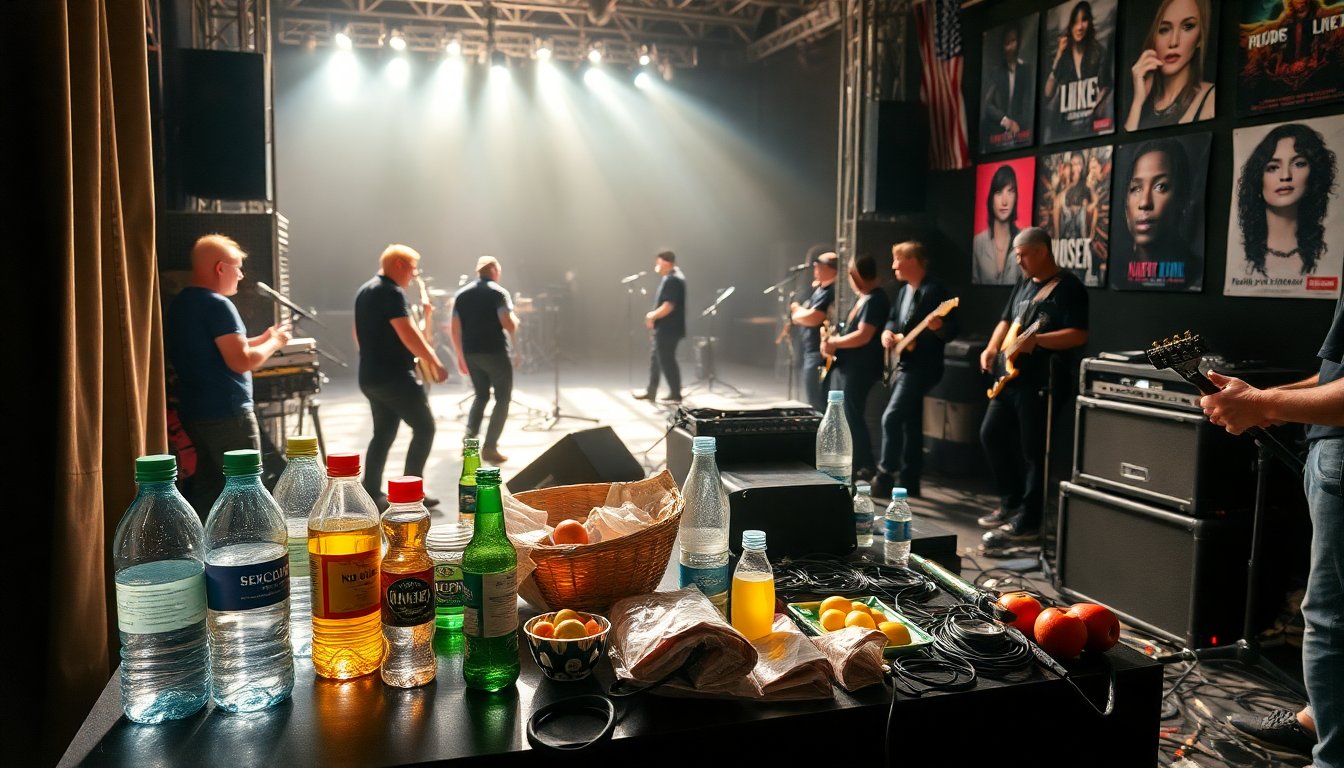Table of Contents
The life of a touring artist is often romanticized, but the reality can be grueling. Traveling from one city to another, whether by bus, van, or airplane, musicians spend countless hours in transit. The monotony can be overwhelming until they finally step onto the stage, where adrenaline kicks in. For performers to deliver their best, they must be in the right mental state. This is where the concert rider becomes essential, outlining expectations for the show.
A concert rider acts as a blueprint to ensure smooth operations, minimizing potential confusion and errors. While many elements are practical—such as load-in times, merchandise handling, and stage requirements—the most intriguing aspects often pertain to the artist’s comfort, particularly in their dressing room.
The infamous riders of rock legends
One of the most iconic riders in music history belongs to the legendary band Van Halen. Their 1982 rider famously included a clause mandating that no brown M&Ms be present backstage. The document begins with a formal request: “Dear Purchaser,” meticulously laying out expectations.
As we delve deeper into the rider, it details various meal preferences and dietary restrictions, including a curious request for two bottles of Blue Nun white wine. However, it is the stipulation regarding the M&Ms—emphasized in bold letters—that has captured public imagination. The underlying message was not merely about the candy itself but rather a test of the promoter’s attention to detail; if they overlooked something as small as a brown M&M, what else might they neglect?
Modern-day riders: humor and creativity
In a similar vein, the Foo Fighters took a more creative approach with their 2011 rider, which spanned an impressive 52 pages. Compiled by road manager Gus Brandt, it included not only food preferences but also humorous anecdotes and trivia. For instance, it featured a line about Chewbacca’s lack of recognition in the Star Wars franchise and quirky mentions of baseball history. Additionally, it creatively requested a coloring book with colored pencils and a word search puzzle featuring the whimsical term “horseboogers.”
Other artists exhibit varying degrees of specificity in their requirements. Bands like U2 and Coldplay tend to be less demanding, with U2 simply asking for a selection of bottled beer, spirits, and wines, while Coldplay specifies a no American beer policy. Conversely, the late David Bowie preferred his dressing room to be maintained at a precise temperature range of 14 to 18 degrees Celsius.
Unique and unusual requests
When it comes to unusual requests, the Barenaked Ladies stand out with their quirky demand for 20 pounds of bananas, alongside a bottle of high-quality single malt Scotch. Their rider reflects a flexible yet health-conscious approach to food, eagerly welcoming diverse meal options while firmly requesting to avoid chicken breast or vegetarian lasagna.
Jane’s Addiction’s rider from 2001 takes the cake in terms of extravagance. They stipulated the need for two black stretch limousines, a police escort, and even a chiropractor and masseuse on standby. Such demands illustrate the lengths to which bands go to ensure their comfort and safety while performing.
Allergies and environmental consciousness
Some artists have more serious considerations. For instance, Weezer’s rider explicitly requests no shellfish or peanuts due to allergies, along with specifications for certain brands of organic bread and dark chocolate. They even prohibit Styrofoam, highlighting their commitment to environmental sustainability.
Trent Reznor of Nine Inch Nails insists on having formal place settings, complete with china and real silverware, alongside an odd request for cornstarch—marked as “very important.” Meanwhile, Peter Gabriel’s requirements are equally precise, demanding oxygen when performing at high altitudes and female masseuses for his pre-gig massages.
A concert rider acts as a blueprint to ensure smooth operations, minimizing potential confusion and errors. While many elements are practical—such as load-in times, merchandise handling, and stage requirements—the most intriguing aspects often pertain to the artist’s comfort, particularly in their dressing room.0


